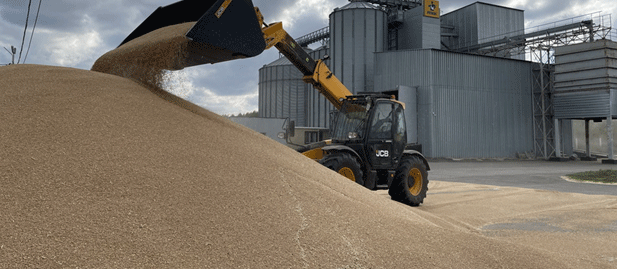In early March 2025, the Kazakh government approved new transport subsidies aimed at supporting grain exporters, and the result was immediate: Kazakhstan’s wheat prices rose to $200 per tonne, reversing fears of a market downturn. According to Yevgeny Karabanov, Head of Analytics at the Grain Union of Kazakhstan, the subsidies were effective in both stabilizing domestic supply and opening up new export opportunities, especially to remote foreign markets.
The subsidies, worth 40 billion tenge (~$90 million USD), cover part of the logistical costs for shipping grain to a range of destinations:
- 20,000–30,000 tenge per tonne for transit to Black Sea, Azov, Baltic, and Georgian ports,
- Shipments to the Baltics, Iran, Afghanistan, and Southeast Asia,
- And special support for the state-owned Food Corporation’s deliveries to Central Asia.
The goal: remove 2 million tonnes of excess wheat from Kazakhstan’s internal market, which has been under pressure since a record 2024 harvest. From January to March 2025, wheat prices rose by 10,000–15,000 tenge per tonne, driven not only by the subsidy program but also by strong foreign demand.
Domestic and Export Price Overview (March 2025):
- Wheat (Class 3, domestic market): 75,000–120,000 KZT/tonne (EXW, with VAT)
- Export (DAP Saryagash):
- Class 3: $200–270/tonne
- Class 4: $192–196/tonne
- Class 5: $182–186/tonne
- Barley: $205–210 (DAP), $215–220 (FOB Aktau)
- Flour (Afghan milling): $230–240/tonne
- Flour (Premium): $390–395/tonne
Karabanov notes that Azerbaijan has increased wheat purchases from Kazakhstan, reducing its dependency on Russian grain, while Turkey has reopened its market for milling wheat. Kazakhstan’s improved competitiveness, fueled by reduced transportation costs, may even make its wheat attractive for re-import into Russia, where winter crops have reportedly suffered.
Balancing the Books: Wheat Stocks and Season Outlook
While market sentiment is stable, analysts are closely watching stock levels. As of March, official stock numbers have been declining faster than export data suggests—an indication that regional reporting may have inflated 2024 harvest figures.
Karabanov forecasts that by the start of the 2025 harvest, ending wheat stocks will reach 3–3.5 million tonnes—above the ideal 2 million, but far below early estimates of 5–6 million tonnes. This means that the market is heading toward a healthier supply-demand balance, which should support stable pricing into the second half of the agricultural season.
However, significant further price growth is not expected unless global market shocks occur. Barring such events, Kazakhstan’s wheat market appears to be settling into a sustainable rhythm.
Kazakhstan’s transport subsidy policy has provided a timely and effective boost to wheat prices, supported by strong international demand and improved export logistics. With manageable stock levels and a promising new season ahead, the country’s grain market is showing signs of long-term stability. While dramatic price jumps may not continue, the structural support for exports is likely to benefit farmers, traders, and regional partners alike.
Error




